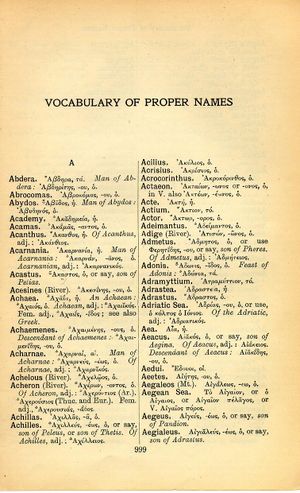Acesines: Difference between revisions
From LSJ
γενέται καὶ πατρὶς ἔχουσιν ὀστέα → my parents and my fatherland have my bones
m (Text replacement - "link={{" to "link={{") |
m (Text replacement - "}}]]" to "}}]]") |
||
| Line 1: | Line 1: | ||
{{WoodhouseENELnames | {{WoodhouseENELnames | ||
|Text=[[File:woodhouse_999.jpg|thumb | |Text=[[File:woodhouse_999.jpg|thumb | ||
|link={{filepath:woodhouse_999.jpg | |link={{filepath:woodhouse_999.jpg}}]](River) Ἀκεσίνης, -ου, ὁ. | ||
}} | }} | ||
{{Lewis | {{Lewis | ||
Revision as of 10:10, 15 August 2017
English > Greek (Woodhouse)
(River) Ἀκεσίνης, -ου, ὁ.
Latin > English (Lewis & Short)
Ăcĕsĭnēs: ae, m., = Ἀκεσίνης,
I a river in India, which falls into the Indus, now the Chenaub, Curt. 9, 3, 20; Mel. 3, 7, 6; Plin. 6, 20, 23 al.
Latin > French (Gaffiot 2016)
Ăcĕsīnēs,¹⁴ is, m., fleuve de l’Inde : Curt. 9, 4, 8, etc.
Latin > German (Georges)
Acesīnēs, is, m. (Ἀκεσίνης), ein Fluß in Indien, der auf seinem rechten Ufer den Hydaspes, auf seinem linken aber den Hydraotes in sich aufnimmt und dann als bedeutender Strom in den Indus mündet, j. Dschenab od. Tschenaub, Curt. 8, 9 (30), 8 u.a. Iustin. 12, 9, 1. – Nbf. Acesīnus, ī, m., Plin. 6, 71 u. 37, 200. Mela 3. § 69 Frick (Parthey Agasinus). – Nbf. Agēsīnes, is, m., Oros. 3, 19, 6.

